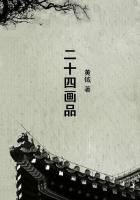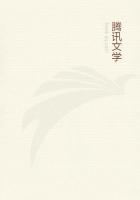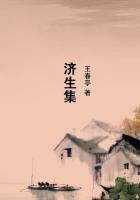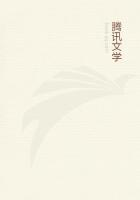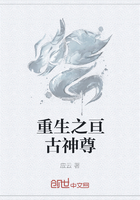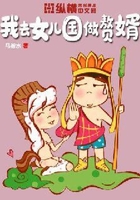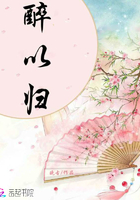The snake men are very expert in catching and handling serpents, and are seldom bitten. If one is bitten it is nothing serious, as they have a secret medicine which they use that is both prophylactic and curative, and makes them immune to the poison so that no harm ever results from a bite. The medicine is taken internally and also applied locally. Efforts have been made to discover its composition but without success. If a snake is located which shows fight by the act of coiling it is tickled with a snake-whip made of eagle's feathers, which soon soothes its anger and causes it to uncoil and try to run away. It is then quickly and safely caught up and dropped from the hand into a bag carried for that purpose.
Visitors who attend the dance are under no restrictions, but are free to come and go as they please, either sightseeing or in search of curios. If the visitor has a supply of candy, matches and smoking-tobacco to give away he finds frequent opportunities to bestow his gifts. The children ask for "canty," the women want "matchi," and the men are pleased with a "smoke."On the morning of the dance both the men and women give their hair an extra washing by using a mixture of water and crushed soap-root. The white fibers of the soap-root get mixed with the hair, which gives it a tinge of iron gray. The children also get a bath which, because of the great scarcity of water, is not of daily occurrence.
To the Moquis the snake dance is a serious and solemn affair, but to the visitors it is apt to be an occasion for fun and frolic.
Owing to a misunderstanding of its true meaning, and because of misconduct in the past on similar occasions, notice is posted on the Kiva asking visitors to abstain from loud laughing and talking. In other words it is a polite request made by the rude red man of his polished (?) white brother to please behave himself.
The dance begins late in the afternoon and lasts less than one hour, but while it is in progress the action is intense. The snakes are carried in a bag or jar from the Kiva to the Kisa, built of cotton-wood boughs on one side of the plaza, where the snakes are banded out to the dancers. After much marching and countermarching about the plaza, chanting weird songs and shaking rattles, the column of snake priests, dressed in a fantastic garb of paint, fur and feathers, halts in front of the Kisa and breaks up into groups of three.
The carrier takes a snake from the Kisa puts it in his mouth, and carries it there while dancing. Some of the more ambitious young men will carry two or more of the smaller snakes at the same time. The hugger throws his left arm over the shoulder of the carrier and with his right hand fans the snake with his feather whip. The gatherer follows after and picks up the snakes as they fall to the ground.
After the snakes have all been danced they are thrown into a heap and sprinkled with sacred corn meal by the young women. The scattering of the meal is accompanied by a shower of spittle from the spectators, who are stationed on, convenient roofs and ladders viewing the ceremony. Fleet runners now catch up the snakes in handfuls and dash off in an exciting race over the mesa and down rocky trails to the plains below where the snakes are returned unharmed to their native haunts.
While the men are away disposing of the reptiles the women carry out large ollas, or jars, filled with a black liquid, which is the snake medicine that is used in the final act of purification by washing. When the men return to the mesa they remove their regalias and proceed to drink of the snake medicine which acts as an emetic. With the remainder of the concoction, and assisted by the women, they wash their bodies free from paint. After the men are all washed and puked they re-enter the Kiva, where the long fast is broken by a feast and the formal ceremonies of the snake dance are ended.
The snake dance is annually witnessed by many visitors who gather from different sections of the country and even foreign lands.
As there are no hotels to entertain guests every visitor must provide his own outfit for conveyance, eating and sleeping. Even water is scarce. Local springs barely furnish enough water to supply the native population; and when the number of people to be supplied is increased from one to two hundred by the visitors who attend the dance, the water question becomes a serious problem.
On the lower portion of the road which leads up from the spring to the gap at Walpi on the first mesa, the trail is over drifted sand which makes difficult walking. To remedy this defect in the trail, a path has been made of flat stones laid in the sand, which shows that the Moquis are quick to recognize and utilize an advantage that contributes to their convenience and comfort.
The Santa Fe Pacific is the nearest railroad, which runs about one hundred miles south of the Moqui villages. The tourist can secure transportation at reasonable rates of local liverymen either from Holbrook, Winslow, Canon Diablo or Flagstaff. The trip makes an enjoyable outing that is full of interest and instruction from start to finish.
Some years ago the government, through its agents, began to civilize and Christianize these Indians and established a school at Keam's Canon, nine miles east of the first mesa, for that purpose. When the school was opened the requisition for a specified number of children from each pueblo was not filled until secured by force. As free citizens of the United States, being such by the treaty made with Mexico in 1848 and, indeed, already so under a system of self-government superior to our own and established long before Columbus discovered America, they naturally resented any interference in their affairs but, being in the minority and overpowered, had to submit.


